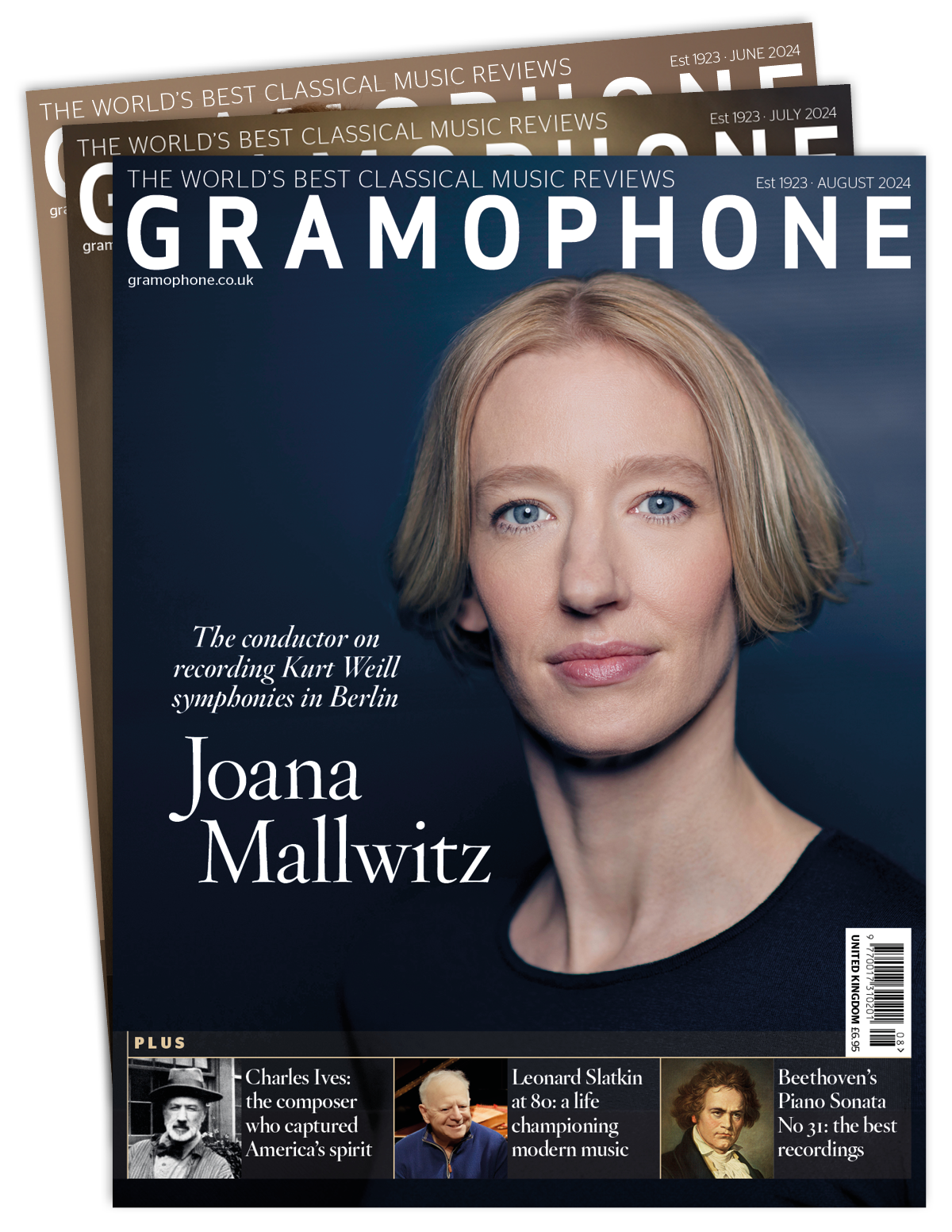BEETHOVEN Symphonies Nos 1-9
Brüggen, his orchestra, and the symphonies played live
View record and artist detailsRecord and Artist Details
Composer or Director: Ludwig van Beethoven
Label: Calig
Magazine Review Date: 01/2013
Mastering:
Stereo
DDD
Catalogue Number: GCDSA921116

Tracks:
| Composition | Artist Credit |
|---|---|
| Symphony No. 1 |
Ludwig van Beethoven, Composer
Frans Brüggen, Conductor Ludwig van Beethoven, Composer Orchestra of the 18th Century |
| Symphony No. 2 |
Ludwig van Beethoven, Composer
Frans Brüggen, Conductor Ludwig van Beethoven, Composer Orchestra of the 18th Century |
| Symphony No. 3, 'Eroica' |
Ludwig van Beethoven, Composer
Frans Brüggen, Conductor Ludwig van Beethoven, Composer Orchestra of the 18th Century |
| Symphony No. 4 |
Ludwig van Beethoven, Composer
Frans Brüggen, Conductor Ludwig van Beethoven, Composer Orchestra of the 18th Century |
| Symphony No. 5 |
Ludwig van Beethoven, Composer
Frans Brüggen, Conductor Ludwig van Beethoven, Composer Orchestra of the 18th Century |
| Symphony No. 6, 'Pastoral' |
Ludwig van Beethoven, Composer
Frans Brüggen, Conductor Ludwig van Beethoven, Composer Orchestra of the 18th Century |
| Symphony No. 7 |
Ludwig van Beethoven, Composer
Frans Brüggen, Conductor Ludwig van Beethoven, Composer Orchestra of the 18th Century |
| Symphony No. 8 |
Ludwig van Beethoven, Composer
Frans Brüggen, Conductor Ludwig van Beethoven, Composer Orchestra of the 18th Century |
| Symphony No. 9, 'Choral' |
Ludwig van Beethoven, Composer
Frans Brüggen, Conductor Laurens Collegium & Cantorij, Rotterdam Ludwig van Beethoven, Composer Marcel Beekman, Singer, Tenor Michael Tews, Singer, Bass Orchestra of the 18th Century Rebecca Nash, Singer, Soprano Wilke te Brummelstroete, Singer, Contralto (Female alto) |
Author: Nalen Anthoni
Yet Brüggen’s message, interpreted from uncorrupted texts, gets through, every repeat except one (in the third movement of the Seventh) observed. But he reserves judgement about Beethoven’s metronome markings, even totally repudiating speeds that reflect the brilliance, vivacity and humour of the Eighth. Slow burn is substituted for swift cut and thrust in the first movement of the Third but momentum falters at dramatic points; and Brüggen disrupts the beginning of the finale by holding back the tempo of the theme after the rushing introduction. Still, when he meets Beethoven even halfway, the results are remarkable, as in the Second. It’ll be curmudgeonly not to respond to Brüggen’s own response to the rhetoric of the outer movements or the nuanced shading and shaping of the Larghetto. If he is a touch tame in the opening movement of the Fifth, he makes amends in a meticulously detailed Scherzo graphically leading into a finale, fierily exciting at a tempo six points higher than specified. Brüggen is his own man in this matter. But when his decisions come close to or virtually equal Beethoven’s requirements, another dimension opens. Not one simply covered by pace but by a sense of space at any pace that only an elite conductor can achieve. The coherent bass-line in the opening Adagio of the Fourth underpins a consciousness of the music lifting upwards, conjuring ‘the sky-dome vastness of the dark introduction’ (Donald Tovey), a vastness that continues into the Allegro vivace with no unseemly haste at the composer’s marking of mimim=80. Similar qualities abound in the Sixth, in other movements not discussed, and exaltedly in the Ninth. Brüggen strips it of the overbearing bombast encrusted across generations and, in a recreation of beauty, both chaste and potent, phrases curve according to melodic or harmonic progressions, paragraphs unfold in long-breathed lines, changes in metre are seamlessly accommodated. Soloists convey musical substance through clearly enunciated words; the chorus does likewise without drowning the orchestra. This is Brüggen’s voyage to the vortex of Beethoven’s last symphony. Go with him for a rare emotional encounter.
Explore the world’s largest classical music catalogue on Apple Music Classical.
Included with an Apple Music subscription. Download now.

Gramophone Digital Club
- Digital Edition
- Digital Archive
- Reviews Database
- Full website access
From £8.75 / month
Subscribe
Gramophone Full Club
- Print Edition
- Digital Edition
- Digital Archive
- Reviews Database
- Full website access
From £11.00 / month
Subscribe
If you are a library, university or other organisation that would be interested in an institutional subscription to Gramophone please click here for further information.




